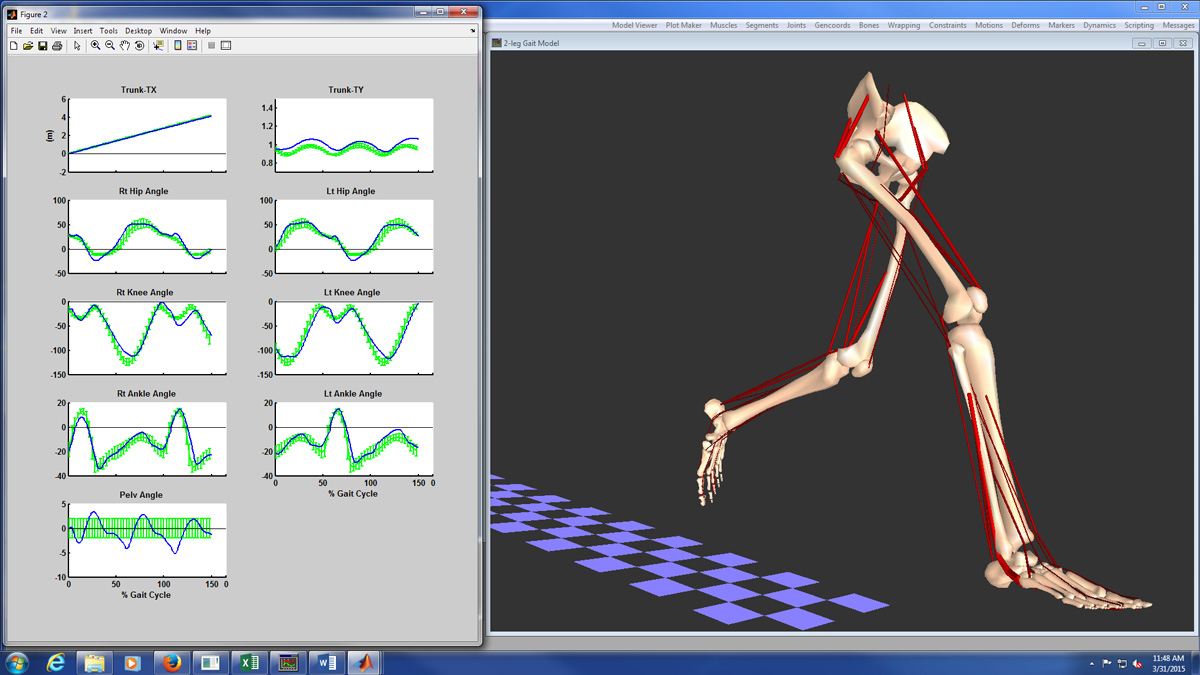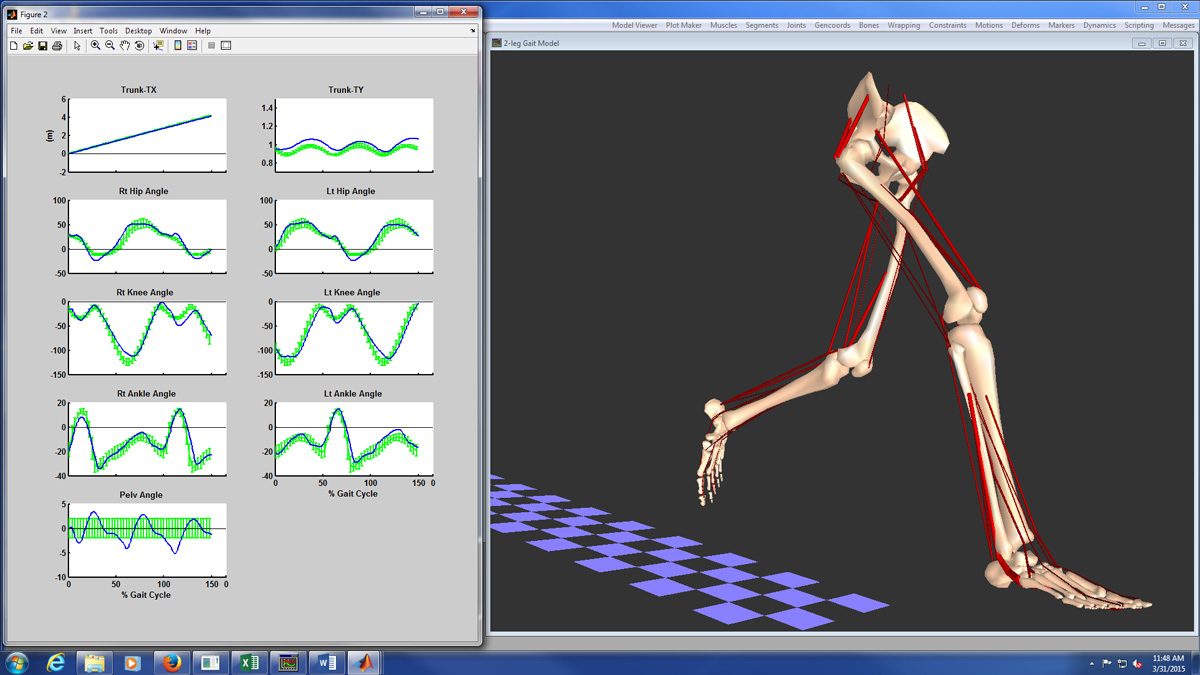Building a Better Prosthetic
UI biology researcher models complex muscle interactions to help make prosthetic devices less painful
People who use leg prostheses often deal with pain caused by the very devices that help them move.
Craig McGowan, an assistant professor of biological sciences at the University of Idaho, is studying the mechanics of movement so companies that design prostheses can create devices that work with the body’s neuromuscular system.
“The long-term goal is to have a device that enables people to have healthy, active lifestyles without pain,” says McGowan, who is also part of UI’s WWAMI Medical Education faculty.
With funding from a one-year Murdock Foundation Exceptional Opportunity Grant, McGowan and his students are developing a computer simulation that models how prostheses designed for running interact with the body.
Problems with Prostheses
Engineers design these running-specific devices – which are often called “blades” but work more like springs – but it’s unknown exactly how an amputee runner’s remaining muscles adapt to controlling the device, or how the runner’s limb interacts with the device’s rigid socket.
By studying athletes, McGowan’s team can understand the highest level of performance possible with these devices.
“It sets the upper bounds of what people are capable of,” he says. “If we look there, it lets us set a target for what’s possible for other individuals.”
The simulation’s first phase models a non-amputee using data gathered from real-life runners. McGowan is refining the program so it shows the way muscles are activated and work together, down to the finest detail.
“What we have is a plausible solution for how the muscles are driving a human being,” he says. “These are things we can’t measure directly in a human.”
The next step is building a simulation of an amputee using a prosthesis, which is still in progress.
McGowan first modified a general model to remove lost muscle and bone, then added a model of a prosthetic running device.
McGowan is now testing this model against data from amputee runners – the majority of whom are current or former Paralympic athletes – gathered in Salt Lake City through collaborative research with other institutions, including the University of Colorado at Boulder, MIT and Utah’s Orthopedic Specialty Hospital.

Help from Kangaroo Rats, Too
Some help in creating the simulation also comes from McGowan’s other research projects. McGowan runs UI’s Comparative Neuromuscular Biomechanics Lab, which studies the evolution of musculoskeletal systems. One project, for example, studies kangaroo rats to understand how hopping evolved.
“It’s remarkable how much of that research translates into these running prostheses, which are essentially big springs,” McGowan says.
McGowan will refine the simulation enough this year to publish preliminary results, gather data and apply for longer-term grants.
“While our research has direct implications for otherwise healthy individuals who have suffered limb loss due to injury, our hope is to ultimately be able to help the millions of people who have been affected by diseases such as diabetes as well,” McGowan says. “Daily exercise can be a powerful tool in mitigating the impact of disease, but you’re not going to exercise if your prosthesis causes you pain.”







